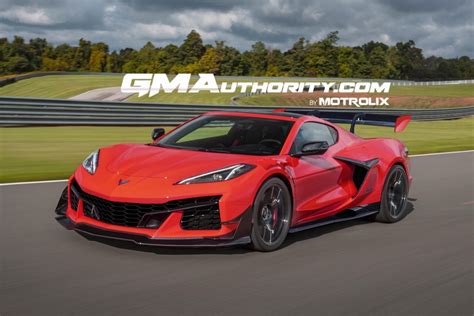
Several used car models are projected to experience significant depreciation in value by 2025, with electric vehicles (EVs) and luxury cars dominating the list of vehicles expected to see the steepest declines, according to a study by CarEdge.com. The analysis, which considers factors like depreciation curves, market demand, and emerging trends, highlights potential financial implications for current owners and prospective buyers in the used car market.
Vehicles Facing the Biggest Depreciation
The CarEdge.com study identifies ten vehicles anticipated to have the largest depreciation rates by 2025. The list includes several high-end models and EVs, reflecting broader market trends affecting these segments. The top three vehicles expected to depreciate the most are:
-
Maserati Ghibli: This luxury sedan is projected to lose a substantial portion of its value, facing one of the highest depreciation rates in the used car market. The Ghibli’s high initial price and relatively high maintenance costs contribute to its rapid depreciation.
-
Alfa Romeo Giulia: Another luxury sedan, the Giulia, is also expected to see significant depreciation. Market perception, reliability concerns, and competition within the luxury segment contribute to this decline.
-
Nissan LEAF: As one of the pioneering mass-market EVs, the Nissan LEAF faces increasing competition from newer electric models with longer ranges and advanced technology, leading to its considerable depreciation.
The remaining vehicles on the list, each facing substantial depreciation, include other luxury cars and electric vehicles, indicative of the current trends in the used car market.
Factors Driving Depreciation
Several factors contribute to the depreciation of used car values. These include:
-
Market Demand: Changes in consumer preferences and demand for certain vehicle types can significantly impact resale values. For instance, the increasing popularity of SUVs and crossovers has affected the demand for sedans, leading to higher depreciation rates for these models.
-
Technological Advancements: The rapid pace of technological advancements in the automotive industry, particularly in electric vehicles, makes older models less desirable. Newer EVs boast improved battery technology, longer ranges, and advanced features, leading to faster depreciation for older models like the Nissan LEAF.
-
Reliability and Maintenance Costs: Vehicles with a reputation for high maintenance costs or reliability issues tend to depreciate more quickly. Luxury vehicles, in particular, often have higher maintenance costs, which can deter potential buyers in the used car market.
-
Initial Purchase Price: Higher initial purchase prices generally lead to greater depreciation in dollar terms, even if the percentage depreciation is similar to that of less expensive vehicles.
-
Inventory Levels: The availability of used car inventory also affects depreciation rates. An oversupply of a particular model can drive down prices and increase depreciation.
Impact on Owners and Buyers
The projected depreciation rates have significant implications for both current owners and prospective buyers of these vehicles.
-
Current Owners: Owners of vehicles facing high depreciation rates may experience a substantial loss in value when they decide to sell or trade in their cars. This can affect their financial planning and ability to purchase a new vehicle.
-
Prospective Buyers: For buyers, the depreciation rates present an opportunity to purchase these vehicles at a significantly lower price in the used car market. However, they should also consider the potential for ongoing maintenance costs and the vehicle’s overall reliability.
Expert Insights and Analysis
Industry experts emphasize the importance of considering depreciation when making a car purchase. “Depreciation is often the biggest expense of car ownership, even more than fuel, insurance, and maintenance,” says a CarEdge.com analyst. “Understanding which vehicles depreciate the most can help consumers make more informed decisions and potentially save thousands of dollars over the life of the car.”
The analysis also highlights the impact of market trends on depreciation rates. “The shift towards electric vehicles and the increasing demand for SUVs are reshaping the used car market,” explains another industry expert. “Vehicles that don’t align with these trends are likely to depreciate more quickly.”
Detailed Look at the Top 10 Depreciating Cars
To provide a comprehensive understanding, let’s delve deeper into each of the ten vehicles identified by CarEdge.com and the specific factors contributing to their depreciation:
-
Maserati Ghibli: The Maserati Ghibli, a luxury sedan known for its Italian styling and performance, faces significant depreciation due to its high initial cost, elevated maintenance expenses, and the brand’s somewhat spotty reliability reputation. While the Ghibli offers a unique driving experience, its depreciation rate reflects the challenges faced by luxury vehicles in the used car market. “The Ghibli’s allure fades quickly due to its high running costs and reliability concerns,” notes a used car market analyst.
-
Alfa Romeo Giulia: Similar to the Ghibli, the Alfa Romeo Giulia, another Italian luxury sedan, is expected to see substantial depreciation. The Giulia’s depreciation is driven by factors such as brand perception, reliability concerns, and strong competition from established luxury brands like BMW and Mercedes-Benz. Despite its sporty handling and distinctive design, the Giulia struggles to retain its value in the used car market.
-
Nissan LEAF: As one of the earliest mass-market electric vehicles, the Nissan LEAF has paved the way for the EV revolution. However, its early-adopter status also contributes to its rapid depreciation. Newer EVs offer longer ranges, faster charging times, and advanced technology, making older LEAF models less desirable. Additionally, battery degradation concerns can further impact the LEAF’s resale value.
-
Jaguar F-PACE: The Jaguar F-PACE, a luxury SUV, is also expected to experience significant depreciation. While the F-PACE offers stylish design and a comfortable ride, it faces competition from other luxury SUVs with stronger brand recognition and better reliability ratings. Maintenance costs associated with the Jaguar brand also contribute to its depreciation.
-
BMW 5 Series: The BMW 5 Series, a popular luxury sedan, is known for its performance and advanced technology. However, its high initial cost and the potential for expensive repairs contribute to its depreciation. As newer models are introduced with updated features, older 5 Series vehicles tend to lose value more quickly.
-
Cadillac Escalade: The Cadillac Escalade, a large luxury SUV, offers spacious interiors and a commanding presence. However, its size and fuel consumption can deter buyers in the used car market, leading to higher depreciation rates. Additionally, the Escalade’s high initial price contributes to its depreciation in dollar terms.
-
Lincoln Navigator: Similar to the Escalade, the Lincoln Navigator, another large luxury SUV, faces depreciation challenges due to its size, fuel consumption, and high initial price. While the Navigator offers a comfortable and luxurious ride, its running costs can make it less appealing to some buyers in the used car market.
-
Ford Mustang Mach-E: The Ford Mustang Mach-E, an electric SUV inspired by the iconic Mustang, is also expected to depreciate significantly. While the Mach-E has garnered positive reviews for its performance and styling, it faces competition from other electric SUVs with longer ranges and more established charging infrastructure. Additionally, the rapidly evolving EV market contributes to its depreciation.
-
Chevrolet Bolt: The Chevrolet Bolt, a compact electric hatchback, offers an affordable entry point into the EV market. However, its depreciation is driven by factors such as battery recall issues, limited range compared to newer EVs, and competition from other affordable electric vehicles.
-
Audi A6: The Audi A6, a luxury sedan, is known for its refined driving experience and advanced technology. However, like the BMW 5 Series, its high initial cost and the potential for expensive repairs contribute to its depreciation. Newer A6 models with updated features also accelerate the depreciation of older models.
Strategies to Mitigate Depreciation
While depreciation is an inevitable part of car ownership, there are several strategies that owners can employ to mitigate its impact:
-
Choose Vehicles with Lower Depreciation Rates: Researching depreciation rates before purchasing a vehicle can help consumers make more informed decisions. Some brands and models consistently hold their value better than others.
-
Maintain the Vehicle Properly: Regular maintenance and proper care can help preserve a vehicle’s condition and resale value. Keeping service records and addressing any issues promptly can demonstrate to potential buyers that the vehicle has been well-maintained.
-
Avoid High Mileage: High mileage can significantly impact a vehicle’s resale value. Limiting mileage and avoiding unnecessary driving can help preserve the vehicle’s value.
-
Consider Leasing: Leasing a vehicle can be a good option for consumers who are concerned about depreciation. Leasing allows them to drive a new vehicle for a fixed period without having to worry about its long-term depreciation.
-
Time Your Sale Wisely: Selling a vehicle at the right time can also help mitigate depreciation. Selling before a major redesign or refresh can help preserve the vehicle’s value.
The Future of Used Car Values
The used car market is constantly evolving, and several factors are expected to influence used car values in the coming years. These include:
-
Electric Vehicle Adoption: The increasing adoption of electric vehicles will continue to reshape the used car market. As EVs become more prevalent, the demand for traditional gasoline-powered vehicles may decline, leading to higher depreciation rates for these models.
-
Autonomous Driving Technology: The development of autonomous driving technology could also impact used car values. As self-driving cars become more common, the demand for traditional vehicles may decrease, leading to higher depreciation rates.
-
Subscription Services: The rise of subscription services, which allow consumers to access a vehicle for a monthly fee, could also impact used car values. As more consumers opt for subscription services, the demand for traditional car ownership may decline, leading to higher depreciation rates.
-
Economic Conditions: Economic conditions, such as interest rates and inflation, can also impact used car values. During periods of economic uncertainty, consumers may be more hesitant to purchase new or used vehicles, leading to lower prices and higher depreciation rates.
Conclusion
Understanding the factors that influence used car values is crucial for both current owners and prospective buyers. The CarEdge.com study provides valuable insights into the vehicles expected to depreciate the most by 2025, highlighting the impact of market trends, technological advancements, and reliability concerns. By considering these factors, consumers can make more informed decisions and potentially save thousands of dollars over the life of the car. The projected depreciation rates serve as a reminder that depreciation is a significant expense of car ownership and should be carefully considered when making a purchase. As the automotive industry continues to evolve, staying informed about market trends and depreciation rates will become even more important for navigating the used car market.
Frequently Asked Questions (FAQ)
-
Why are electric vehicles like the Nissan LEAF depreciating so much?
Electric vehicles (EVs) such as the Nissan LEAF are experiencing high depreciation due to several factors. Primarily, rapid advancements in EV technology mean that newer models offer significantly improved range, faster charging capabilities, and updated features compared to older models. “The Nissan LEAF, being one of the early mass-market EVs, faces increasing competition from newer electric models with longer ranges and advanced technology,” states a CarEdge.com analyst. Additionally, concerns about battery degradation and the cost of battery replacement can deter potential buyers in the used car market, further contributing to depreciation. Government incentives and tax credits that favor new EV purchases also play a role, making used EVs less attractive.
-
Is depreciation the biggest cost of car ownership?
Yes, depreciation is often the most significant expense associated with owning a car. According to industry experts, depreciation can often exceed the combined costs of fuel, insurance, and maintenance. “Depreciation is often the biggest expense of car ownership, even more than fuel, insurance, and maintenance,” emphasizes a CarEdge.com analyst. The rate at which a car depreciates depends on various factors, including the make and model, market demand, condition, and mileage. Understanding depreciation rates is crucial for making informed car-buying decisions.
-
How can I minimize the depreciation of my car?
There are several strategies to mitigate the impact of depreciation on your vehicle. First, choose vehicles known for holding their value well. Research depreciation rates before making a purchase. Regular maintenance and keeping detailed service records are essential. “Regular maintenance and proper care can help preserve a vehicle’s condition and resale value,” suggests an automotive expert. Avoid high mileage by limiting unnecessary driving. Also, consider selling your car before a major redesign or when it’s still relatively new. Leasing a car can also be an option if you are primarily concerned about depreciation, as the leasing company bears the brunt of the depreciation cost.
-
Are luxury cars always the ones that depreciate the most?
While not always the case, luxury cars often depreciate at a faster rate than non-luxury vehicles. This is due to several factors. Luxury cars typically have higher initial purchase prices, which means a larger dollar amount is lost as the car ages. They also tend to have higher maintenance and repair costs, which can deter potential used car buyers. Moreover, luxury car brands often release new models with advanced features and technologies more frequently, making older models seem outdated and less desirable. “The Ghibli’s allure fades quickly due to its high running costs and reliability concerns,” notes a used car market analyst, highlighting a typical challenge faced by luxury vehicles.
-
What impact does the increasing adoption of electric vehicles have on the used car market?
The growing popularity of electric vehicles (EVs) is significantly reshaping the used car market. As more consumers switch to EVs, the demand for traditional gasoline-powered vehicles may decrease, leading to higher depreciation rates for these models. Additionally, rapid advancements in EV technology are making older EVs less desirable compared to newer models with longer ranges and improved features. This competition contributes to the faster depreciation of older EVs. Furthermore, government incentives favoring new EV purchases can further impact the resale value of used EVs. The shift towards electric vehicles is creating new dynamics in the used car market, influencing which vehicles hold their value and which depreciate more rapidly.









